- About us
- Support the Gallery
- Venue hire
- Publications
- Research library
- Organisation chart
- Employment
- Contact us
- Make a booking
- Onsite programs
- Online programs
- School visit information
- Learning resources
- Little Darlings
- Professional learning
Charles Henry Theodore Costantini was a Paris-born surgeon of Italian descent who was twice transported to the Australian colonies. In 1823, convicted of theft, he was banished to New South Wales for life but served only two years before being granted a pardon. Shortly after his return to England he was convicted of theft again and sent to Van Diemen’s Land, arriving in Hobart in 1827. 'Disposed to be very troublesome', Costantini re-offended and was sent to the penal station at Macquarie Harbour, where the camp commandant employed him to make sketches. At Port Arthur from 1831, he worked as an assistant surgeon. He gained his freedom in March 1834 and by 1838 was in Launceston, advertising his availability for the execution of 'portraits in the most correct style'. Between this time and the mid-1850s, Costantini produced some 60 portraits and landscapes, mainly in watercolour, and often for clients of middling or ex-convict stock. George Billet, a farmer and landowner at Sorell, was the son of convicts, as was his wife Jemima. Costantini's portrait shows them with seven of the eleven children Jemima had between 1836 and 1858.
Purchased 2016
This portrait, of colonial landowners George and Jemima Billet with seven of their children was painted in watercolour by convict artist CHT Costantini in about 1852. Framed with an outer wide band of dark, dappled, and textured wood and an inner narrow band of yellow gold, the portrait itself is 28 centimetres high by 23 centimetres wide.
The portrait-oriented image is organised in three horizontal sections. The upper third is empty space, without image, and the colour of parchment. The mid-section is occupied by the nine family members facing us directly and occupying the full width of the image. The parents are shown in the middle of the work with the youngest at their feet, three older children to the right and three smaller children on the left. They share a formal, still quality. The figures are naïve and appear almost cut-out, their overlayed arrangement suggests a receding background that allows the image to fluctuate between flatness and three-dimensionality. The lower tier of the overall composition is a carpet upon which the family stand. It is coloured with soft shades of green and decorated with circular evenly spaced and loosely painted gold and green floral motifs. The figures and their held objects are meticulously crafted, in contrast to the freely painted quality of the carpet.
Moving from our right to left, Jemima and her two eldest daughters wear long-sleeved formal dresses that are cinched at the waist and extend downwards and outwards in ruched hoop skirts, forming large bell shapes. The daughter on the right has smooth mid-brown hair which is centrally parted and rolled on the sides to cover her ears. Her hair frames her softly rendered features, arched eyebrows, large blue eyes and pursed lips. Her mid-blue dress has a v-shaped neckline, a white-ruffle fronted shirt underneath and a small circular brooch pinned at the neck. She holds a pink flower in her left hand and the bent elbow displays loose sleeves adorned with geometric triangular embroidery. Her right arm reaches forward to rest upon her sister’s left shoulder.
The sisters wear similar hairstyles and dresses. This sister has the addition of ringlets falling behind her ears and a soft apricot pink dress nearly identical to the blue. Her brown eyes are larger, and her neck is adorned with a choker of small brown beads above a white lace collar. Her wide skirts partially obscure those of her sister and mother and the colour almost merges with the parchment background. The sleeves are decorated with alternating red and blue horizontal stripes near the cuff. The toes of dainty pointed shoes are barely visible below her skirts. She stands in front of her mother but reaches backwards to grasp the back of the chair upon which Jemima Billet is seated.
Beneath her arm, the open smiling face of one of the younger children peeps through. Half the size of the adults, her child’s face is similar in scale and shares the features of brown hair and rounded eyes.
In the centre of the work, Jemima Billet is seated on a chair. She is distinguished from her daughters by symbols of matriarchal status; a black dress and lace headpiece. The headpiece ties in a bow at the left under her chin. At the centre of her chest hangs a small, round blue pendant framed by a lace shirt and long fine gold necklace. She holds a white lace handkerchief in her hands which rest in her lap. Her husband stands on her right.
George Billett is a head taller than Jemima and their adult daughters. His hair sweeps back from his forehead and curls inwardly at his ears around pale blue eyes. His long sideburns frame his serious expression. George’s black cravat is tied in an uneven bow over a cream shirt. An ornately patterned brocade-like vest contrasts with the open longer jacket and matching trousers of his black suit. His arm bends to allow his right thumb to hook into the pocket of his vest. At his feet sits the youngest child, a baby in a white dress, with blue bows at the shoulders. The child's left arm is raised and holds a bunch of multi-coloured flowers. Some petals have scattered on the carpet. A small blue boot hangs from their right arm like a charm. A necklace adorns the baby’s neck.
Below the crook of George’s bent right arm are the remaining three children. They have blonde hair and happy smiles and wear shorter frocks that mirror the bell-like design of the adult dresses. The child directly below George’s arm stands in the far background, dressed in blue. They have short curls and blue eyes. In their left hand they hold a small colourful bird. In the foreground stands a taller child with straight hair and clasped hands, her lace edged pantaloons show beneath the pale gold of her frock above little black slippers. By their left elbow stands a short haired sibling. This child wears a grey dress with black details, buttoned down the front and drawn in at the waist with a tasselled cord. They wear buttoned boots and striped socks and hold a small pink cat.
In the foreground, directly in front of the baby, is a toy horse. It stands with arched neck, and trotting pose atop a red wheeled platform. Facing to the left of the work, the red string attached to the front of the toy meanders loosely upon the soft green carpet.
Audio description script written by Meredith Hughes and voiced by Krysia Kitch
C.H.T. Costantini (age 49 in 1852)
George Bellette (age 40 in 1852)
Jemima Bellette (age 34 in 1852)
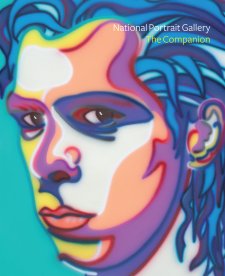

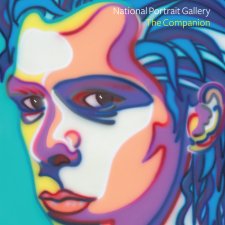
On one level The Companion talks about the most famous and frontline Australians, but on another it tells us about ourselves.
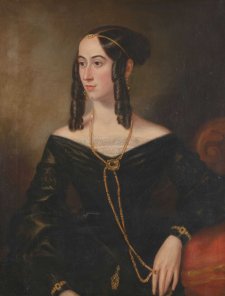
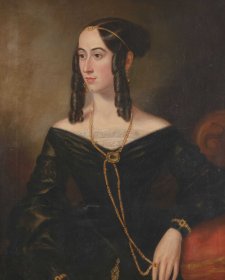
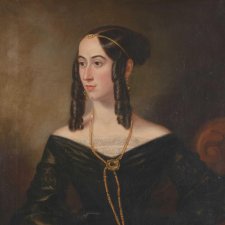
Emma Kindred examines fashion as a representation of self and social ritual in 19th-century portraiture.
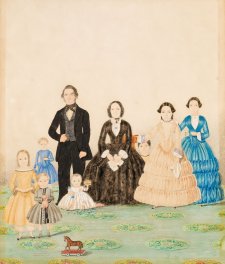
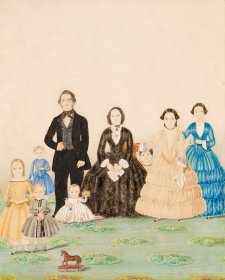
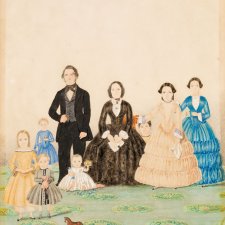
Jo Gilmour uncovers endearing authenticity in the art of a twice-transported Tasmanian.